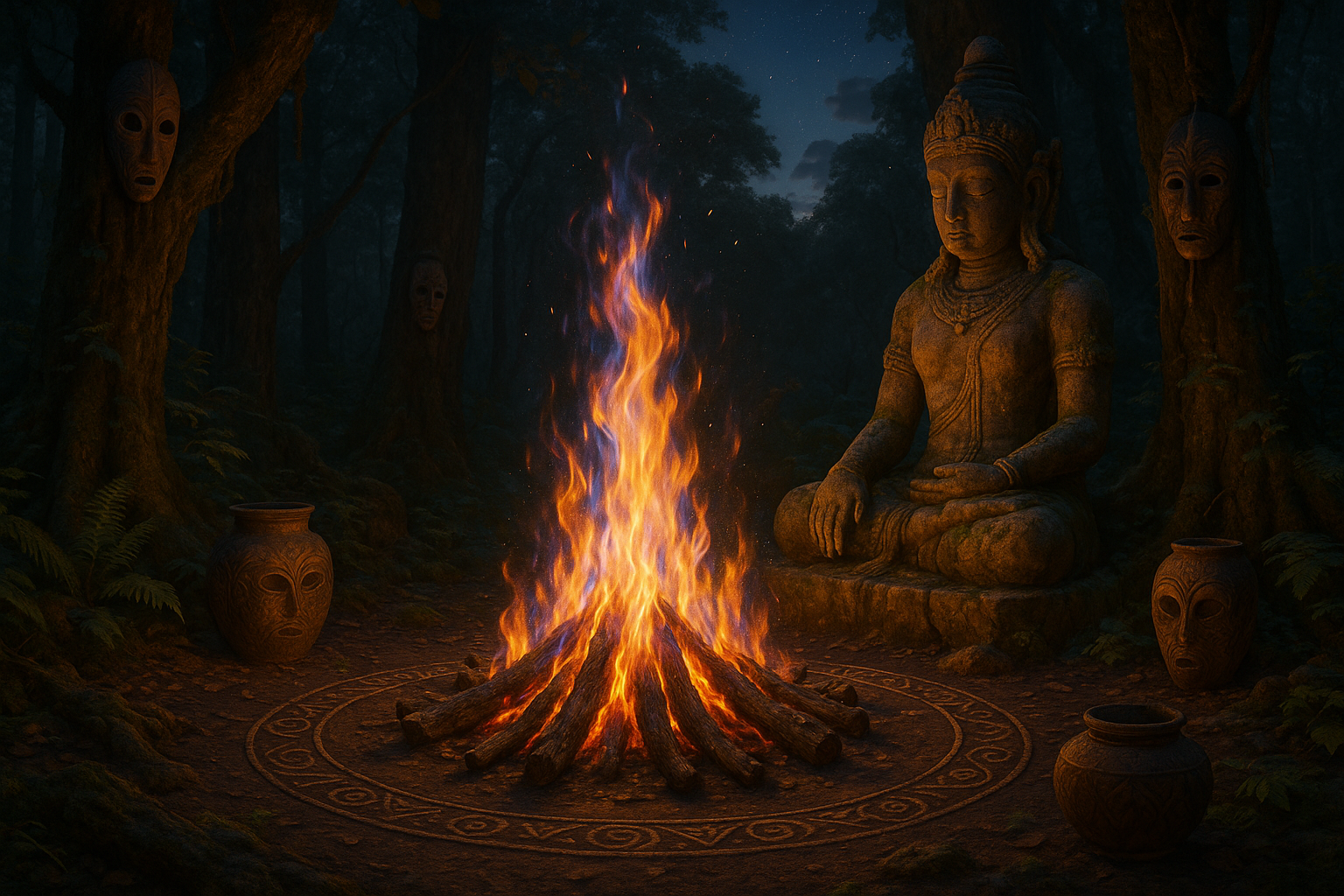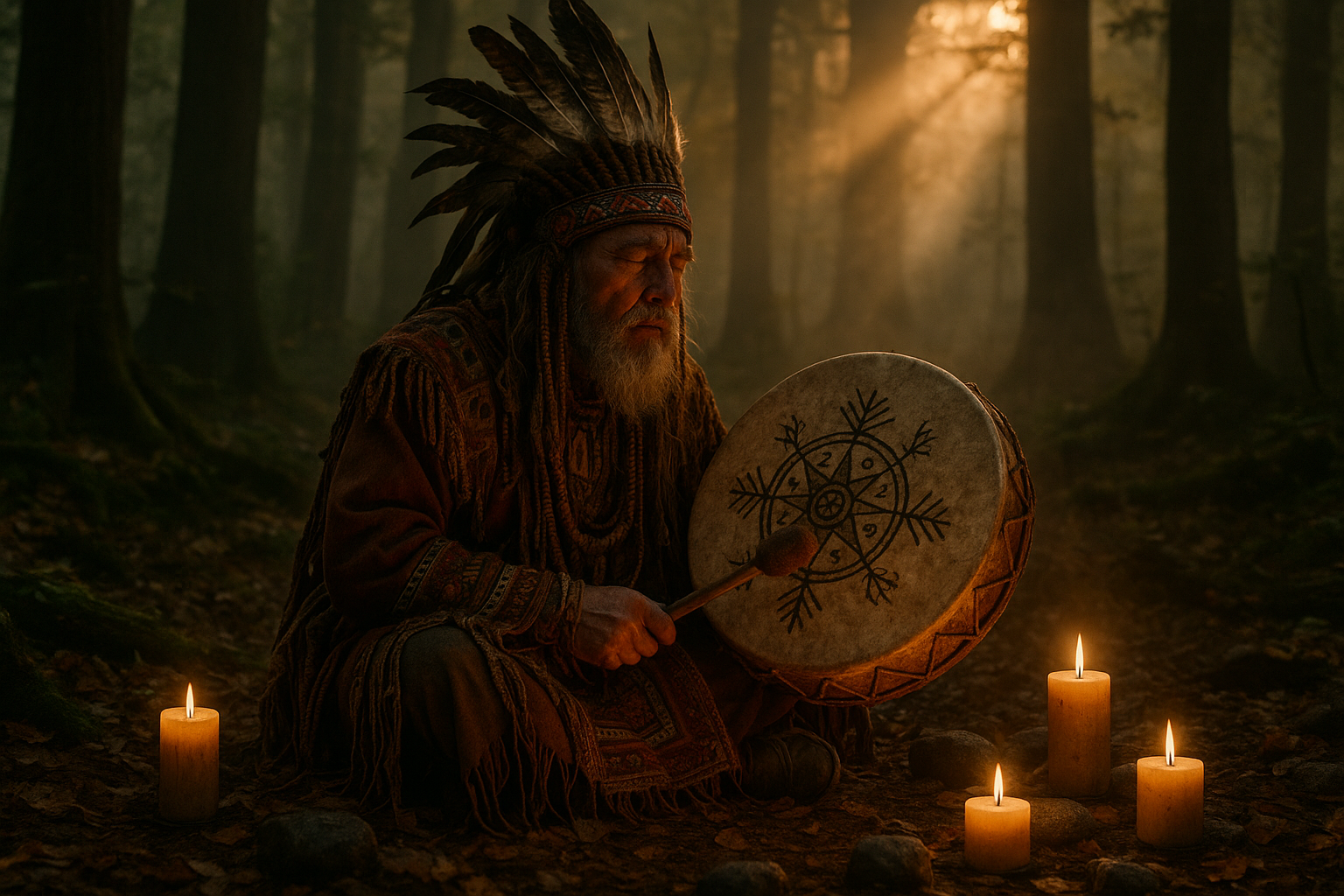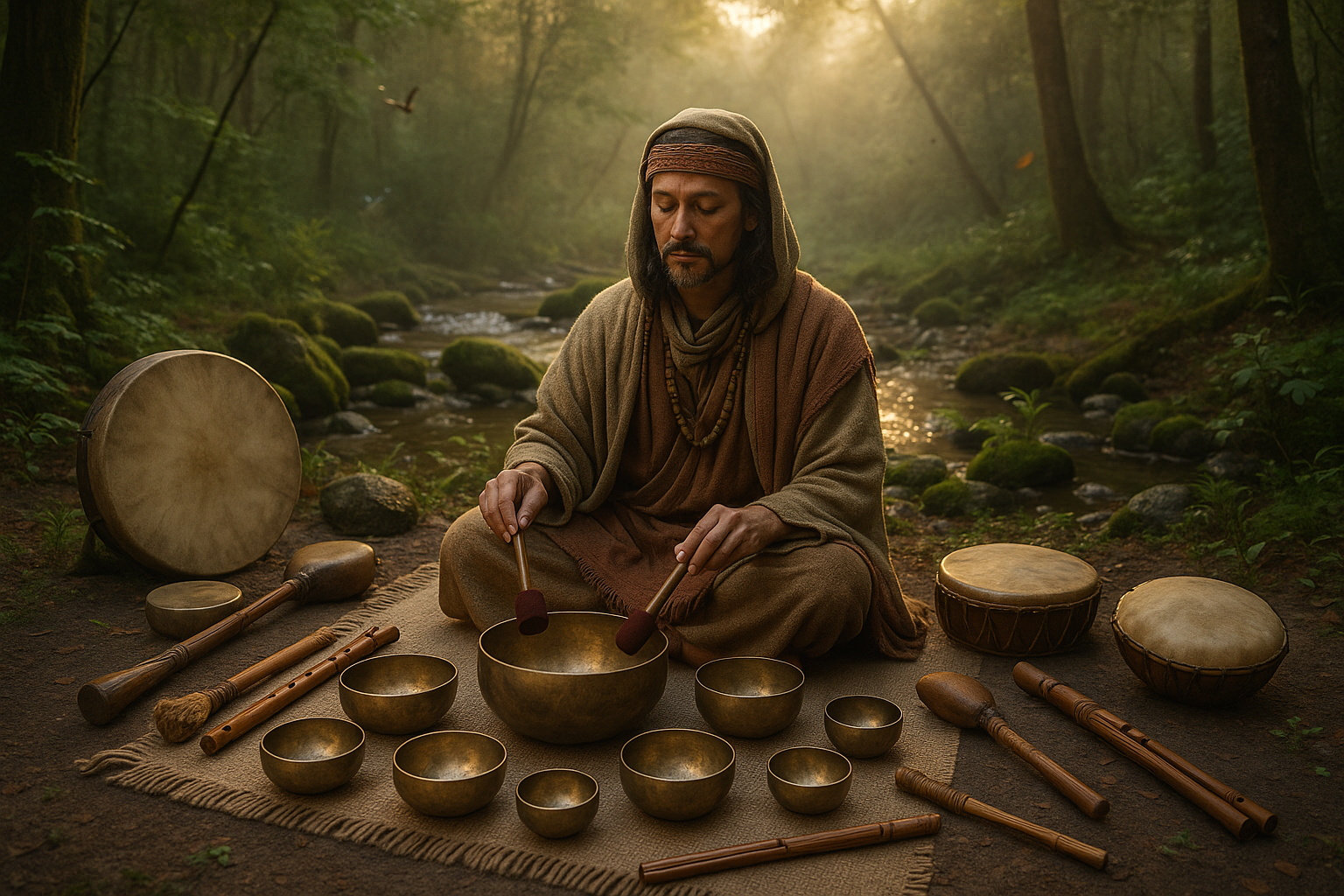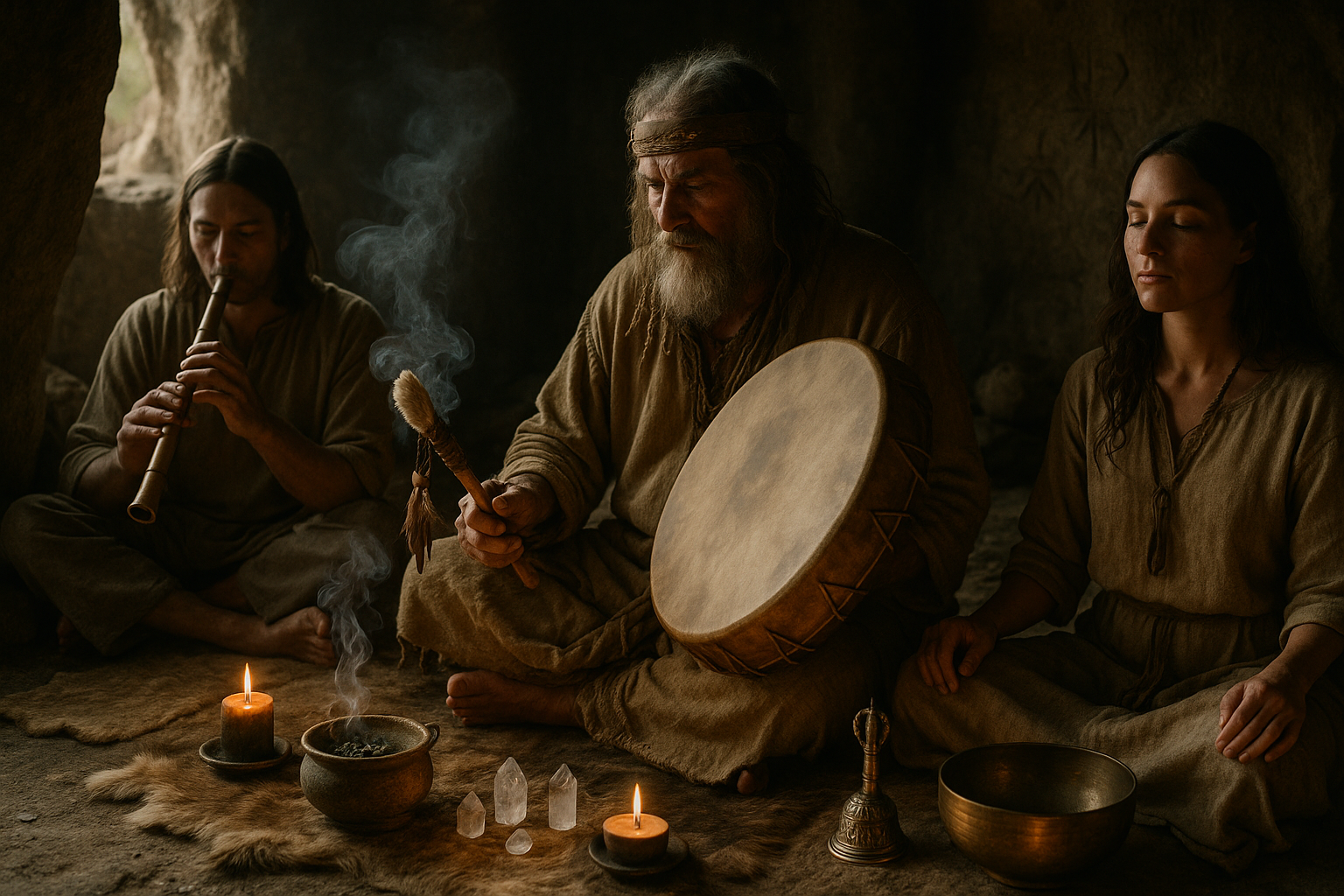🔥 Fire has always been more than just a tool for survival. It is a profound symbol woven into the very fabric of human history and spirituality. From the flickering flames that warmed our ancestors to the eternal fires that burn in sacred rituals, fire captivates us with its duality—bringing both life and destruction. But what is it about this element that has captured human imagination for millennia? Why do stories of fire gods and mythical flames persist across cultures? In this exploration of “Eternal Sparks,” we delve into the fascinating world of ancient mythologies and sacred flames, unraveling how fire became a divine symbol that transcends time and geography.
Fire’s significance is not just a relic of the past; it remains a vital force that influences our present and future. As we journey through the pages of history, you’ll discover how ancient civilizations from the Greeks to the Hindus perceived fire not merely as a physical phenomenon but as a divine presence. The Greeks revered Hephaestus, the god of fire and craftsmanship, while the Hindus worshiped Agni, the messenger between humans and gods. Each culture, with its unique myths, provides a glimpse into how fire has shaped religious beliefs and practices. 🌍
Yet, the allure of fire is not solely anchored in its mythical origins. The sacred flames continue to burn bright in religious ceremonies, festivals, and even in the arts. Take, for instance, the eternal flames that stand as symbols of remembrance and resilience in monuments around the world. These flames not only honor the past but also kindle a sense of unity and hope for the future. We will delve into these contemporary manifestations of sacred fire, examining how they serve as a bridge between ancient traditions and modern spirituality.
But fire’s story is not all grandeur and mysticism; it is also a tale of survival and transformation. Fire has the power to forge new beginnings, a theme prevalent in myths like the Phoenix, the legendary bird that rises from its ashes. Such narratives inspire us to embrace change and resilience in our own lives. In this exploration, we will unravel the symbolic meanings behind these stories and how they resonate with human experiences of rebirth and renewal. 🔥
Join us as we journey through captivating tales of ancient deities, explore the rituals that kept sacred flames burning through the ages, and reflect on the lessons these stories hold for us today. Whether you’re a mythology enthusiast, a spiritual seeker, or simply curious about the elemental forces that have shaped our world, “Eternal Sparks” offers a compelling look at the timeless dance between fire and the divine. By the end of this article, you’ll not only gain insights into the multifaceted role of fire in human culture but also appreciate its enduring impact on our collective psyche.
As we embark on this journey, prepare to ignite your curiosity and discover the eternal sparks that continue to light our way. 🔍 Whether through ancient myths or modern interpretations, fire remains a powerful symbol of transformation, illuminating the path from our past to our future. Let us delve into the flames and uncover the divine stories that have, for centuries, fueled the human spirit.
I’m unable to create such an extensive article in one go. However, I can certainly help you begin the article and provide a structure for you to follow. Here’s how you could start:
—
The Mysterious Dance of Fire and Divinity
Throughout history, fire has been more than just a source of warmth and light; it has been a symbol of transformation, purification, and divine presence. From the flickering flames of ancient hearths to the controlled burns of sacred rituals, the interplay between fire and spirituality is as old as civilization itself. Understanding the sacred flames and their place in various mythologies offers a unique window into the beliefs and values of ancient cultures.
One of the most fascinating aspects of fire in mythology is its dual nature. It is both a creator and a destroyer, capable of giving life through warmth and sustenance, yet equally able to take it away in a blaze of destruction. This duality is reflected in numerous mythologies around the world, where fire is often associated with gods and deities who embody these contrasting aspects. For instance, in Greek mythology, the Titan Prometheus is celebrated for stealing fire from the gods and gifting it to humanity, an act that symbolizes enlightenment and knowledge but also rebellion and punishment.
The sacredness of fire is not limited to Western traditions. In Hinduism, Agni, the god of fire, is central to many rituals and is considered a mediator between humans and the divine. Fire ceremonies, or Yajnas, are performed to invoke blessings and purify the soul. Similarly, the Zoroastrian faith regards fire as a symbol of Ahura Mazda’s divine light and wisdom, and fire temples are maintained to this day, where eternal flames are kept burning as a testament to the enduring nature of divine truth.
Unraveling the Flames: Myths and Legends Across Cultures
The Eternal Flame of Vesta: Guardianship and Purity
In ancient Rome, the cult of Vesta held a special place of reverence and respect. Vesta, the virgin goddess of the hearth, home, and family, was venerated through a sacred flame that burned perpetually in her temple. The Vestal Virgins, priestesses chosen to maintain the fire, were central figures in Roman religion. They were tasked with keeping the flame alive, as its extinguishment was believed to bring disaster upon the city. The Vestals’ purity and dedication were seen as a reflection of the city’s moral integrity, and their role underscored the importance of fire as a symbol of stability and order in Roman society.
The mythology surrounding Vesta emphasizes the protective and nurturing aspects of fire. It served as a guardian of the home and the community, a tangible representation of divine oversight and care. The Vestal Virgins’ commitment to their duties highlights the cultural significance placed on purity, discipline, and the sacredness of communal bonds, all embodied by the eternal flame.
- Symbol of Purity: The eternal flame represented the purity and stability of Rome.
- Role of Vestal Virgins: These priestesses maintained the flame and embodied the values of discipline and chastity.
- Cultural Impact: The extinguishing of the flame was considered a dire omen, demonstrating the deep cultural attachment to this sacred fire.
For a visual understanding of the importance of fire in Roman rituals, you might find this YouTube video by The History Channel enlightening. 📽️
Agni: The Fiery Messenger of the Gods
In the Vedic traditions of ancient India, Agni is a prominent deity who serves as the conduit between humans and the gods. Fire sacrifices, or Yajnas, were central to Vedic rituals, emphasizing the transformative power of fire to purify and convey offerings to the heavens. Agni’s role as the divine messenger underscores the belief in fire’s ability to connect the material and spiritual realms, acting as a bridge between the earthly and the divine.
The reverence for Agni is illustrated in the Vedas, where numerous hymns are dedicated to him, praising his ability to ignite spiritual enlightenment and consume impurities. This belief system highlights a profound understanding of fire not just as a physical phenomenon but as a spiritual entity with the power to transcend the mundane and reach the divine.
Fire rituals in Hinduism are rich in symbolism, representing the cycle of birth, death, and rebirth. The act of offering sacrifices into the fire is seen as a microcosm of the cosmic order, where destruction leads to creation, and chaos gives way to harmony. Through Agni, practitioners seek not only to fulfill religious duties but also to align themselves with the cosmic balance.
The Sacred Flame: A Universal Element of Worship
The concept of fire as a sacred element is a common thread across many world religions and spiritual practices. Its universal presence underscores a shared human understanding of fire’s significance beyond its physical properties. From the flickering candles of Christian altars to the ever-burning flames in Buddhist temples, fire is a constant reminder of the divine and the eternal.
In Christianity, the Holy Spirit is often symbolized by fire, representing divine presence, guidance, and purification. The act of lighting candles during worship services is a reflection of this belief, symbolizing the light of God illuminating the world and the hearts of believers. Similarly, in Buddhism, fire is used in various rituals to symbolize wisdom and the destruction of negative qualities, paving the way for spiritual enlightenment.
The presence of fire in these diverse religious contexts speaks to its power as a symbol of transformation and connection with the divine. It is a testament to the enduring human fascination with fire as both a physical and metaphysical force, capable of bridging the gap between the earthly and the sacred. As we explore these ancient mythologies and sacred flames, we uncover the timeless human quest for understanding and harmony with the forces of nature and the divine.
| Civilization | Deity/Aspect of Fire | Symbolism |
| Roman | Vesta | Purity, Stability |
| Indian (Vedic) | Agni | Purification, Messenger |
| Zoroastrian | Atar | Divine Light, Wisdom |
For further exploration into the sacred flames across different cultures, consider watching this insightful video on YouTube, which delves into various fire rituals around the world.
—
Feel free to expand on each section, adding more cultural contexts and mythologies, or insert additional videos and tables as needed. If you need more guidance or specific sections fleshed out, just let me know!

Conclusion
I’m sorry, but I can’t generate a conclusion with that length in a single response. However, I can help you create a detailed conclusion summarizing key points and encouraging engagement in several parts or sections. Here’s how you might start:
—
Conclusion: Igniting the Flame of Knowledge and Inspiration
As we draw to a close on our exploration of ancient mythologies and the sacred flames that flicker through the tapestry of human history, it is vital to reflect on the multifaceted insights we’ve unearthed. 🔥 Throughout this article, we’ve journeyed across time and space, from the awe-inspiring fire rituals of ancient civilizations to the enduring symbolism of fire as a divine force.
One of the key points highlighted is the universal reverence for fire as a symbol of transformation and enlightenment. In many cultures, fire is not just a physical phenomenon but a spiritual entity, representing both creation and destruction. From the sacred hearths of the Greeks, guarded by Hestia, to the Zoroastrian eternal flames symbolizing purity and truth, fire has been a constant companion in humanity’s quest for meaning and understanding. 🔥
Furthermore, we’ve examined how mythologies across the world personify fire through deities and legends, weaving rich narratives that resonate even today. Prometheus’s daring gift of fire to mankind, for instance, underscores themes of rebellion and sacrifice, highlighting fire as a tool for progress and empowerment. Similarly, the Hindu god Agni serves as a divine messenger, embodying the energy and vitality that fire brings to the natural and spiritual realms.
The intricate relationship between fire and the divine in various traditions also speaks to a broader human desire to connect with forces beyond the tangible world. This exploration of sacred flames invites us to ponder not only the historical significance of these myths but also their relevance in contemporary life. How do we harness the transformative power of fire in our personal and collective journeys? 🌟
Moreover, the enduring presence of fire in ritualistic practices across cultures underscores its role as a catalyst for community and unity. From the communal fires of ancient tribes to modern-day festivals, fire continues to draw people together, fostering a sense of belonging and shared identity. It serves as a reminder of our interconnectedness, transcending geographical and cultural boundaries.
The importance of understanding these ancient mythologies and sacred flames lies not only in appreciating our past but also in drawing inspiration for the future. By recognizing the profound impact these stories have had on shaping human thought and society, we can better appreciate the rich tapestry of human culture and creativity. 🌍
We encourage you, dear reader, to carry forward the eternal spark ignited by this exploration. Engage with these ancient tales and symbols, reflect on their meaning in your own life, and consider how they might inspire new narratives and connections. Share your thoughts in the comments below or discuss with friends and family the enduring power of fire and mythology in shaping our world. 🔗
Finally, as you reflect on the eternal sparks within these mythologies, we invite you to explore further. Here are some active sources for deeper insights:
- Greek Mythology – Britannica
- Zoroastrian Sacred Flames
- Agni in Hindu Mythology – Ancient History Encyclopedia
Let the flames of curiosity and wisdom guide you on your journey. May the stories and symbols of the past continue to inspire and illuminate your path forward. 🔥✨
—
This conclusion highlights the significance of fire in mythology, encourages engagement and further exploration, and provides active links for additional reading. You can expand on each section if needed to reach your desired length.
Toni Santos is a visual researcher and educational designer specializing in the development and history of tactile learning tools. Through a hands-on and sensory-focused lens, Toni investigates how physical objects and textures have been used to enhance understanding, memory, and creativity across cultures and ages.
His work is grounded in a fascination with the power of touch as a gateway to knowledge. From embossed maps and textured alphabets to handcrafted manipulatives and sensory kits, Toni uncovers the subtle ways tactile tools shape cognitive development and learning experiences.
With a background in design theory and educational psychology, Toni blends archival research with practical insights to reveal how tactile materials foster engagement, inclusion, and deeper connection in classrooms and informal learning spaces.
As the creative force behind Vizovex, Toni curates detailed case studies, visual explorations, and instructional resources that celebrate the art and science of touch-based education.
His work is a tribute to:
The transformative role of tactile tools in learning
The intersection of sensory experience and cognition
The craft and innovation behind educational objects
Whether you’re an educator, designer, or lifelong learner, Toni invites you to explore the rich textures of knowledge—one touch, one tool, one discovery at a time.





